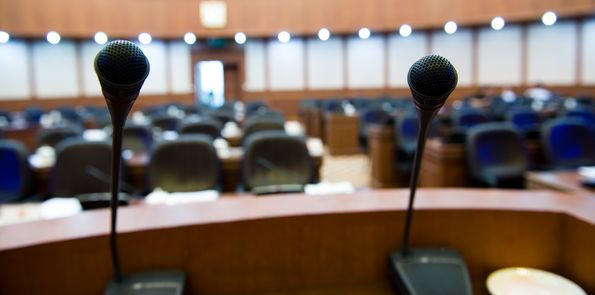Last evening, Treasury Secretary Geithner addressed the Economic Club of New York. His speech was quite moving, he slowly built a clear and understandable path, leading the audience to the conclusion that the US is entering full recovery mode, he detailed, each step of this process, how the Obama Administration slowly planned and executed its plan to stop the bleeding in 2008 and reverse the collapse and move it into a recovery.
I want to share with you some excerpts from this speech.
Our banks and financial markets were still in a state of shock, sucking more oxygen out of the economy, helping push the U.S. and global economies into the worst crisis since the Great Depression.
Businesses were failing at a record rate. Those able to survive were laying off hundreds and hundreds of thousands of workers each month. House prices were falling rapidly and were projected to fall another 30 percent.
As the President prepared to take office in January 2009, it was clear the situation was grave. The President understood that additional actions were urgently needed. He did not sit around hoping the crisis would burn itself out. He was not paralyzed by the complexity of the choices or the terrible politics of the potential solutions.
He decided to act early and forcefully. And his strategy to stabilize and then repair the financial system, combined with the $800 billion of tax cuts and emergency spending in the Recovery Act, the restructuring of the U.S. auto industry, the actions of the Federal Reserve, and the coordinated global rescue he led in the G-20, was very effective in restoring economic growth.
Within three months of taking office, the pace of decline in growth began to slow. By the summer of 2009, the American economy was growing again. Let me make that clear. In about six months, the economy went from contracting at an annual rate of 9 percent to expanding at an annual rate of nearly 2 percent, a swing of almost 11 percentage points.
In a remarkably short period of time, we were able to not just avert a second Great Depression, but also to begin the long and fragile process of repairing the damage and laying a stronger, more durable foundation for economic growth.
As the Secretary went on, he listed all the signs of the economy that are pointing towards recovery:
[unordered_list style=”tick”]
- Over the last two years, the economy has added 3.9 million private sector jobs.
- Growth has been very broad-based, with strength in agriculture, energy, manufacturing, services, and high tech.
- Growth has been led by business investment in equipment and software, which has risen by 33 percent over the past two and a half years, and by exports, which have grown 25 percent in real terms over the same period.
- Productivity has risen at an average annual rate of about 2.25 percent over the same period, a little above its average over the past 30 years.
- Households have made significant progress in reducing excessive burdens of debt, and the personal saving rate stands about 4.5 percent—well above its pre-recession level.
- Leverage in the financial sector has fallen significantly.
- Our fiscal deficits have started to decline as a share of the economy, and we are borrowing less from the rest of the world—our current account deficit is now half the level it was before the crisis relative to GDP.
[/unordered_list]
Mr. Geithner went on to explain what caused the economy to stumble and just why the recovery has taken so long.
In addition, we were hit by a series of blows to growth from outside the United States in 2010 and 2011. The European debt crisis has been very damaging to confidence and growth around the world. Japan’s crisis—the earthquake, tsunami, and nuclear plant disaster—hurt manufacturing growth here and around the world. High oil prices put additional pressure on both consumers and businesses across the United States. These three external shocks took about a percentage point off GDP growth in the first half of 2011.
On top of this, the fear of national default in the United States provoked by the debt limit crisis did terrible damage to business and consumer confidence in July and August of 2011. The fall in confidence at that time was quick and brutal, as large as the declines that happen in typical recessions.
The Secretary tied it all into a pretty bow at the end:
Without more substantial steps to bring down our future deficits, then over the long run the incomes of Americans will rise more slowly and future economic growth will be weaker.
Fiscal reforms are necessary to ensure we have room for the investments we need to improve growth and opportunity in the future. In this new area of more limited resources, we have to be able to target those resources to investments with higher returns. We have to make sure we can meet our changing national security needs in a dangerous and uncertain world. And we have to agree on reforms to make sustainable our commitments to protect health care and retirement security for millions of Americans.
These are the most important reasons why the pace of the expansion slowed after the first few quarters of this Administration. Without these challenges, the recovery would have been stronger.
I am not one who is into speeches, but this one makes me think, made me believe and make me understand. I must say that the Secretary has developed into an excellent orator; perhaps if he could speak this well when he began, he would have been better respected by the public. I must say well done to Mr. Geithner.





